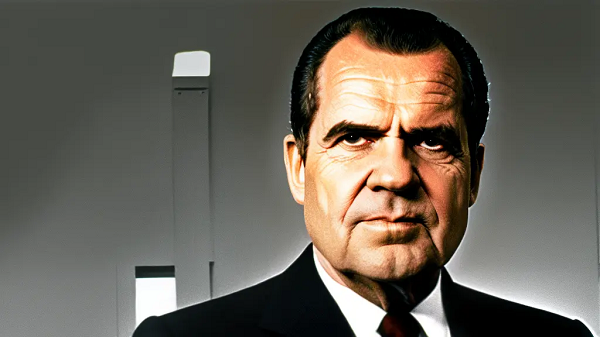Today we are exploring the legacy of Richard Nixon resignation letter! The name Richard Nixon is synonymous with the historic event that shook the United States in the 1970s—his resignation from the presidency. Nixon’s journey from being a prominent figure in American politics to his stunning exit from the Oval Office is a tale of political turmoil, scandal, and ultimately, redemption. In this 2000-word blog post, we will delve into the intricacies of Nixon’s resignation, the events leading up to it, and its lasting impact on the nation. The Day of August 8, 1974, President Nixon addressed the nation to announce his resignation.
| Born | Died | Presidential Term | Vice Presidents | Party | Spouse | Children |
|---|---|---|---|---|---|---|
| January 9, 1913, Yorba Linda, California, United States | April 22, 1994, NewYork-Presbyterian, New York, United States | January 20, 1969 – August 9, 1974 | Spiro T. Agnew (1969–1973), Gerald Ford (1973–1974) | Republican Party | Pat Nixon (m. 1940–1993) | Julie Nixon Eisenhower, Tricia Nixon Cox |
Understanding the Nixon Resignation
H1: Richard Nixon Resignation Letter: A Watershed Moment in American History
At first glance, President Richard Nixon’s resignation may appear to be a distant chapter in American history. However, this momentous event continues to shape the nation’s politics and serves as a testament to the resilience of American democracy. In this article, we will explore the key aspects of Nixon’s resignation, including the Watergate scandal, the resignation letter, and the aftermath, to understand why this chapter is worth revisiting.
Navigating the Resign Maze
Now that we have our roadmap in place, let’s embark on this journey of understanding one of the most pivotal moments in American history. We’ll explore each subheader, unraveling the details and significance of Nixon’s resignation, one step at a time.
1. Nixon’s Early Career and Rise to Power
To comprehend the significance of Nixon’s resignation, we must first understand who Richard Nixon was and how he climbed the political ladder. Born on January 9, 1913, in Yorba Linda, California, Nixon’s journey to the presidency was marked by his service in World War II and his early political career. He served as a Congressman, a Senator, and Vice President under Dwight D. Eisenhower before ascending to the presidency in 1969.
Nixon’s political acumen and leadership skills were evident, but his presidency would be forever marked by the Watergate scandal.
2. The Watergate Scandal: A Political Quagmire
The Watergate scandal unfolded as a series of events beginning with a break-in at the Democratic National Committee headquarters at the Watergate office complex in Washington, D.C., on June 17, 1972. This event triggered a series of investigations, media exposés, and legal proceedings that implicated members of the Nixon administration.
It was revealed that Nixon’s aides had orchestrated the break-in and attempted to cover it up. The scandal reached the highest levels of the Nixon administration and ultimately led to a constitutional crisis that tested the limits of presidential power.
3. The Resignation Letter: A Historic Document
On August 8, 1974, in the face of imminent impeachment and removal from office, President Nixon announced his resignation in a televised address to the nation. Later that day, he signed his letter of resignation, addressed to Secretary of State Henry Kissinger, making it official.
Nixon’s resignation letter is a poignant document, reflecting his decision to put the nation’s interests above his own. It marked the end of a tumultuous era in American politics.
4. August 8, 1974: The Fateful Day
August 8, 1974, is etched in history as the day President Nixon resigned, making him the first president in American history to do so. The nation watched as the sitting president made the difficult decision to leave office, stating, “America will be in good hands.”
The evening of August 8 witnessed Vice President Gerald Ford’s swearing-in as the new president, promising to “consecrate my office, my energies, and all the wisdom I can summon to the cause of peace among nations.”
5. Gerald Ford: Stepping into the Void
Gerald Ford, the man who had never sought the presidency, was thrust into the role of leading the nation during a tumultuous period. Ford’s presidency was marked by his efforts to heal the nation, both politically and emotionally, from the scars of Watergate.
As the new president, Ford extended an olive branch to the nation, declaring, “My fellow Americans, our long national nightmare is over.” He aimed to restore trust in the presidency and move the country forward.
6. The Legacy of Nixon’s Resignation
Nixon’s resignation left an indelible mark on American politics. It serves as a reminder of the accountability of those in power, the importance of a free press, and the strength of the American democratic system. The events surrounding his resignation have informed subsequent political scandals and the scrutiny of presidential actions.
In today’s political climate, the lessons from Nixon’s resignation continue to be relevant, emphasizing the need for transparency, accountability, and a commitment to the Constitution.
7. The National Archives: Preserving History
The National Archives played a crucial role in preserving the documents and records related to Nixon’s resignation. Visitors to the National Archives can view these historical artifacts, gaining insight into this pivotal moment in American history. The meticulous preservation of these records ensures that future generations can learn from the past.
8. Henry Kissinger: A Key Figure in the Nixon Administration
Henry Kissinger was a central figure in Nixon’s administration, serving as National Security Advisor and later as Secretary of State. His influence on foreign policy during this period was significant, and his role in the Nixon administration deserves exploration in the context of his resignation.
9. Impeachment and Removal from Office
The process of impeachment that President Nixon faced was a complex and politically charged one. Although he resigned before being impeached and removed from office, the events leading up to this point raised fundamental questions about the balance of power in the United States.
10. The Media and Nixon: An Ongoing Battle
Throughout Nixon’s presidency and during the Watergate scandal, the media played a crucial role in uncovering the truth and holding the president accountable. This dynamic relationship between the president and the media continues to be relevant today, as the media remains a vital watchdog of those in power.
Conclusion of Richard Nixon Resignation Letter:
It remains a defining moment in American history, offering profound lessons about the strength of democracy, the importance of accountability, and the enduring role of the media. As we reflect on this chapter, we are reminded that even in the face of crisis, the nation can emerge stronger when its institutions and values are upheld. Visit BTech4u






Add comment